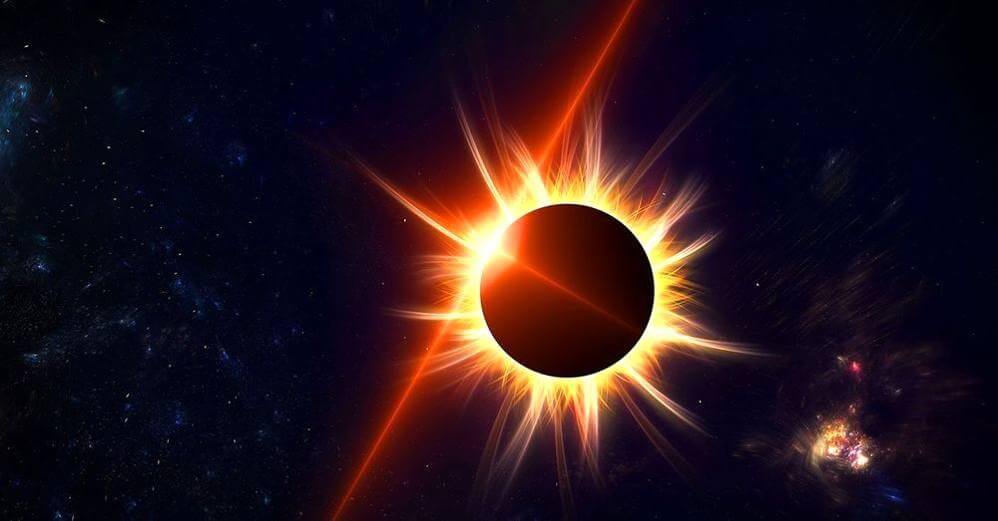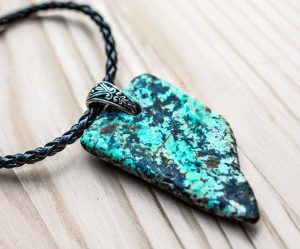In Jyotish (Vedic astrology), the planets are not limited to just the physical celestial bodies like the Sun, Moon, and other planets visible to the naked eye. Two powerful forces, Rahu and Ketu, play a significant role in astrology, though they are not planets in the traditional sense. They are known as Chhaya Grahas or “shadow planets” and represent the lunar nodes—the points where the Moon’s orbit intersects the ecliptic, which is the apparent path of the Sun. Rahu and Ketu are deeply karmic in nature, and their placement in one’s natal chart is said to represent the spiritual and material lessons we must confront in this lifetime.
Understanding the influence of Rahu and Ketu is essential for those seeking to uncover their karmic lessons and progress along their spiritual journey. In this article, we’ll explore the significance of these shadow planets, their mythology, the karmic lessons they impart, and how they affect various aspects of life such as career, relationships, and spirituality.
What Are Rahu and Ketu in Jyotish?
In Vedic astrology, Rahu and Ketu are not physical planets like Mars or Jupiter but represent the two nodes of the Moon: the North Node (Rahu) and the South Node (Ketu). These nodes are where the orbit of the Moon intersects the orbit of the Sun, and they are responsible for eclipses when they align with the Sun and Moon. Despite their non-physical nature, Rahu and Ketu are considered powerful influencers, with significant karmic implications for the individual.
Rahu is often associated with materialism, desires, obsessions, and worldly ambitions, while Ketu represents detachment, spirituality, and the lessons from past lives. Together, they create a polarity in the natal chart, symbolizing the tension between material attachment and spiritual liberation.
The Astronomical Basis of Rahu and Ketu
Astronomically, Rahu and Ketu are the points of intersection between the paths of the Sun and the Moon as they move through the zodiac. These points are technically known as the lunar nodes. Rahu represents the North Node, and Ketu represents the South Node.
During solar and lunar eclipses, the Sun, Moon, and Earth align with these nodes, and their influence becomes even more potent. Eclipses are considered to be times of dramatic transformation and upheaval, largely because of the involvement of Rahu and Ketu. In Jyotish, the placement of Rahu and Ketu in an individual’s natal chart determines where they will experience intense karmic lessons, often in areas related to personal growth, relationships, and spiritual evolution.
Mythology and Symbolism of Rahu and Ketu
In Hindu mythology, the story of Rahu and Ketu originates from the famous tale of the churning of the ocean, also known as Samudra Manthan. During this event, the gods and demons churned the ocean of milk to extract the nectar of immortality, or Amrita. When the nectar was finally obtained, the gods decided to distribute it among themselves, excluding the demons. However, one of the demons disguised himself as a god and consumed the nectar.
This demon sat between the Sun and the Moon while drinking the nectar, and when they discovered his deception, they alerted Lord Vishnu. In response, Vishnu beheaded the demon with his Sudarshan Chakra. However, since the demon had already consumed the nectar, he did not die but instead became immortal. His head became Rahu, and his body became Ketu.
Rahu, the head, represents material desires, illusion, and insatiable ambition. It symbolizes the “mouth” of the demon, constantly consuming but never satisfied. Ketu, the headless body, symbolizes detachment from worldly things, spirituality, and the wisdom gained from past experiences. Together, they represent the duality of life: material attachment versus spiritual liberation.
The Karmic Role of Rahu and Ketu in a Natal Chart
The karmic influence of Rahu and Ketu is profound in Jyotish. They are considered the indicators of past and future karma, guiding individuals on their spiritual journey and showing the lessons they must learn in this lifetime.
- Rahu represents future karma and the material lessons that a soul must learn in this incarnation. Rahu drives individuals toward desires, ambitions, and obsessions that they must experience to grow. It often brings intense, unconventional experiences that may feel confusing or chaotic but are ultimately necessary for evolution.
- Ketu, on the other hand, represents past-life karma and the spiritual lessons that have already been learned. Ketu pushes individuals away from the material world and toward spiritual liberation. It often manifests as a feeling of dissatisfaction with worldly achievements, leading to a search for deeper meaning and detachment from material possessions.
Together, Rahu and Ketu create an axis in the natal chart, often referred to as the Rahu-Ketu axis, which represents the individual’s karmic path. This axis shows where the soul is coming from (Ketu) and where it is going (Rahu), highlighting the tension between material desires and spiritual growth.
Rahu and Ketu: The Axis of Destiny and Karmic Lessons
The placement of Rahu and Ketu in the natal chart creates an axis that is crucial for understanding one’s life purpose and karmic lessons. Rahu and Ketu are always positioned exactly opposite each other, forming a polarity between the houses they occupy.
- Rahu is the area of life where individuals are drawn toward, often with an insatiable hunger for experiences and achievements. It is where they feel most unsettled, curious, and ambitious. However, Rahu’s lessons often come with confusion, illusion, and obsession, forcing the individual to confront their desires and learn how to balance them.
- Ketu is the area of life where individuals may feel more detached or complacent. It represents the part of life that they have mastered in past incarnations but may now feel disinterested in. While Ketu may indicate spiritual insight, it also brings a sense of incompletion in the material realm, urging the individual to release attachment to it.
This Rahu-Ketu axis plays a significant role in shaping the individual’s destiny. The house and sign placements of Rahu and Ketu highlight the areas where the soul must evolve by balancing the extremes of materialism and spirituality.
The Placement of Rahu in the Houses: Material Desires and Illusions
The house where Rahu is placed in the natal chart indicates the area of life where the individual will experience intense desires, ambition, and obsession. Rahu tends to magnify whatever house it occupies, creating a sense of urgency and sometimes confusion or illusion around those areas of life.
- Rahu in the 1st House: Individuals with Rahu in the 1st house often feel a strong desire for self-expression and recognition. They may constantly seek validation from others, and their life journey involves learning to balance their ambitions with a sense of inner peace.
- Rahu in the 7th House: This placement often indicates an obsession with relationships, partnerships, and marriage. Individuals may attract unconventional or intense relationships that teach them lessons about dependency and independence.
- Rahu in the 10th House: Rahu in the 10th house often leads to an intense drive for career success and public recognition. These individuals may experience ups and downs in their professional life, with Rahu pushing them to challenge traditional career paths and explore unconventional ways of achieving success.
Rahu’s influence brings a tendency to chase after material goals, but these pursuits often come with karmic lessons about the balance between desire and contentment.
The Placement of Ketu in the Houses: Spiritual Detachment and Wisdom
Ketu’s placement in the natal chart indicates the area of life where the individual is called to embrace spiritual growth and let go of material attachments. Ketu often represents areas where the soul has gained significant experience in past lives, leading to a sense of detachment or apathy in the current life.
- Ketu in the 4th House: This placement suggests detachment from family life or the home. Individuals with Ketu in the 4th house may feel disconnected from their roots or seek to find emotional security outside of traditional family structures.
- Ketu in the 9th House: This placement indicates a strong inclination toward spirituality and higher learning. Individuals may feel a sense of fulfillment through philosophical or religious pursuits, often seeking wisdom through unconventional paths.
- Ketu in the 12th House: Ketu in the 12th house is a powerful placement for spiritual growth, often leading individuals toward isolation, meditation, and deep introspection. These individuals may feel detached from the material world and are likely to pursue paths that lead to enlightenment and self-realization.
Ketu’s placement guides the individual toward spiritual wisdom, urging them to release worldly attachments and embrace their true inner self.
Rahu and Ketu in the Zodiac Signs: A Karmic Lens on Your Life Path
In addition to their house placements, the zodiac signs that Rahu and Ketu occupy add another layer of meaning to their influence in a person’s life. Each zodiac sign colors the expression of these shadow planets, providing insight into the specific karmic lessons an individual must face.
- Rahu in Aries: Individuals with Rahu in Aries are driven by a need for independence and assertiveness. They must learn to balance their desires for personal freedom with consideration for others.
- Ketu in Libra: Ketu in Libra indicates past-life experiences centered around relationships and partnerships. In this lifetime, the individual is called to detach from codependency and find balance within themselves.
- Rahu in Scorpio: Rahu in Scorpio brings intense emotional experiences and a deep fascination with the hidden aspects of life, such as psychology, mysticism, and transformation. These individuals are learning to face their fears and embrace change.
- Ketu in Taurus: Ketu in Taurus suggests that the individual has mastered the material world in past lives but may now feel detached from wealth and comfort. Their journey involves finding spiritual fulfillment beyond material possessions.
The signs that Rahu and Ketu occupy in the natal chart help to clarify the nature of the challenges and opportunities that the individual will encounter on their karmic journey.
The Transits of Rahu and Ketu: Periods of Transformation and Karmic Shifts
Rahu and Ketu take approximately 18 months to transit through each zodiac sign, and their movement through the natal chart signals periods of intense karmic shifts and transformation. These transits are often associated with major life changes, such as career shifts, relationship changes, or spiritual awakenings.
- Rahu Transit: When Rahu transits through a house, it brings an amplified focus on the matters related to that house. Individuals may feel compelled to pursue new goals, often with an obsessive drive. However, Rahu’s transits can also bring confusion, deception, and illusions that need to be worked through.
- Ketu Transit: Ketu’s transits bring a sense of detachment and dissolution. Individuals may experience a loss of interest in certain areas of life or be forced to confront the limitations of their material pursuits. Ketu’s transits often lead to spiritual breakthroughs and the release of karmic baggage.
These transits are critical periods of transformation that push individuals to confront their deepest desires and fears, guiding them toward greater self-awareness and spiritual growth.
The Impact of Rahu and Ketu on Relationships
Rahu and Ketu play a significant role in shaping relationships, particularly in synastry (the comparison of two natal charts) and marriage astrology. Their influence on relationships is often karmic, indicating past-life connections and unresolved issues that need to be addressed in this lifetime.
- Rahu in the 7th House: In relationship astrology, Rahu in the 7th house can create intense, obsessive, and sometimes unconventional partnerships. These relationships may feel destined but can also bring challenges related to dependency and control.
- Ketu in the 7th House: Ketu in the 7th house often indicates detachment from relationships or a tendency to avoid deep emotional connections. Individuals with this placement may experience dissatisfaction in partnerships and feel drawn toward solitude or spiritual pursuits.
Rahu and Ketu’s placements in relationship charts often highlight the karmic lessons that need to be resolved in partnerships, such as balancing personal desires with mutual support or releasing past-life attachments that hinder growth.
Rahu Mahadasha and Ketu Mahadasha: Life During Major Planetary Periods
In Vedic astrology, the Mahadasha system represents the major planetary periods that an individual experiences throughout their life. Each planet rules for a specific number of years, and during its Mahadasha, the planet’s influence is heightened. The Rahu Mahadasha and Ketu Mahadasha are particularly significant, as they often bring intense karmic lessons and transformative experiences.
- Rahu Mahadasha: Lasting for 18 years, Rahu Mahadasha is a period of material growth, ambition, and challenges related to desire and illusion. Individuals often experience a heightened focus on worldly success, but they may also encounter deception, obsession, and confusion. Rahu Mahadasha pushes individuals to confront their desires and learn how to balance material pursuits with spiritual awareness.
- Ketu Mahadasha: Lasting for 7 years, Ketu Mahadasha is a period of spiritual growth, detachment, and self-realization. During this time, individuals may experience a withdrawal from the material world and a focus on inner peace and spiritual fulfillment. Ketu Mahadasha can bring periods of isolation, loss, or dissatisfaction with worldly achievements, but it also offers opportunities for deep spiritual insight and liberation.
These Mahadasha periods represent significant phases of life, each with its own challenges and opportunities for growth.
Rahu and Ketu Remedies: Balancing Their Influence in Your Life
The influence of Rahu and Ketu can be disruptive, causing confusion, instability, and karmic challenges. However, Jyotish offers several remedies to mitigate the negative effects of these shadow planets and bring balance to their energies.
- Mantras: Chanting mantras dedicated to Rahu and Ketu can help to appease their energies and reduce their negative influence. For Rahu, the mantra is “Om Ram Rahave Namah,” and for Ketu, it is “Om Ketave Namah.”
- Gemstones: Wearing gemstones associated with Rahu and Ketu, such as hessonite for Rahu and cat’s eye for Ketu, can help to balance their influence in the natal chart.
- Rituals and Pujas: Performing specific rituals, such as the Rahu and Ketu Shanti puja, can help to neutralize the negative effects of these shadow planets. These rituals are often recommended during Rahu and Ketu Mahadasha or during challenging transits.
- Spiritual Practices: Engaging in meditation, mindfulness, and self-reflection can help to balance the energies of Rahu and Ketu, allowing individuals to navigate their karmic lessons with greater awareness and clarity.
By following these remedies, individuals can reduce the negative impact of Rahu and Ketu and harness their energy for positive transformation.
Conclusion: Navigating Karmic Challenges with Rahu and Ketu
The influence of Rahu and Ketu in Jyotish is profound, representing the karmic lessons that each soul must confront on its journey toward spiritual growth. Rahu pulls us toward worldly desires, pushing us to experience the material world, while Ketu leads us toward detachment and spiritual liberation. Together, they create a polarity that shapes our destiny, guiding us through the challenges and opportunities of life.
By understanding the placement of Rahu and Ketu in the natal chart, as well as their transits and Mahadasha periods, individuals can gain valuable insight into their karmic path. While Rahu and Ketu may bring confusion, upheaval, and challenges, they ultimately guide us toward greater self-awareness and spiritual evolution. Through self-reflection, spiritual practices, and the application of remedies, we can navigate the karmic lessons of Rahu and Ketu and use their energy to evolve on our life path.
FAQ: Common Questions About Rahu and Ketu in Jyotish
Q: What are Rahu and Ketu in astrology?
A: Rahu and Ketu are the lunar nodes, known as shadow planets in Vedic astrology, that represent karmic lessons and spiritual growth. Rahu is the North Node, associated with material desires, while Ketu is the South Node, representing spiritual detachment and past-life experiences.
Q: How do Rahu and Ketu affect a person’s life?
A: Rahu and Ketu influence different areas of life depending on their placement in the natal chart. Rahu brings challenges related to ambition and materialism, while Ketu encourages spiritual growth and detachment. Together, they shape an individual’s karmic journey and life purpose.
Q: What are the remedies for the negative effects of Rahu and Ketu?
A: Remedies include chanting mantras (e.g., Rahu mantra, Ketu mantra), wearing gemstones like hessonite or cat’s eye, performing rituals (Shanti pujas), and practicing mindfulness to balance their energies.
Q: How long do Rahu and Ketu transits last?
A: Rahu and Ketu typically spend about 18 months transiting each zodiac sign. These transits bring significant karmic shifts, challenges, and opportunities for growth.
Q: What is the significance of Rahu Mahadasha and Ketu Mahadasha?
A: Rahu Mahadasha emphasizes material ambition and challenges, lasting for 18 years, while Ketu Mahadasha focuses on spiritual growth and detachment, lasting for 7 years. Each Mahadasha represents a major life phase with unique lessons and opportunities for transformation.





